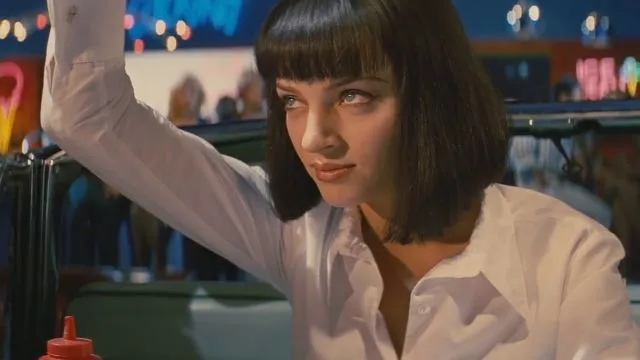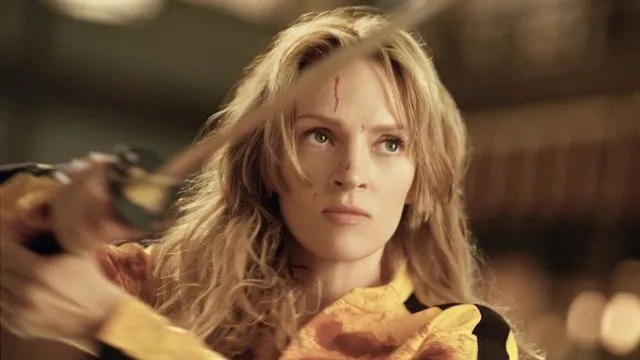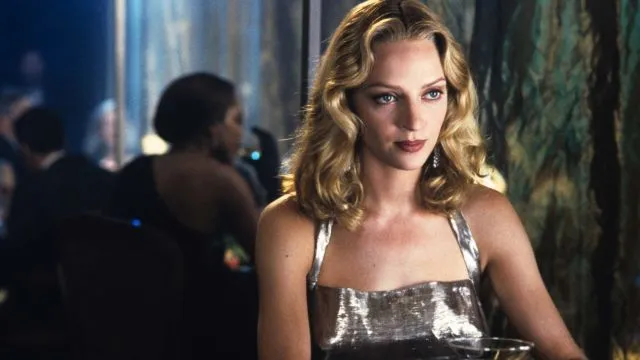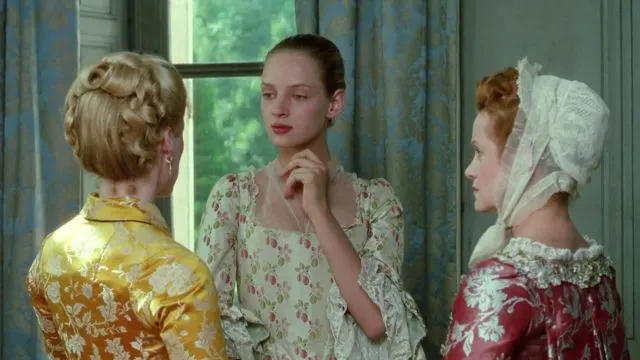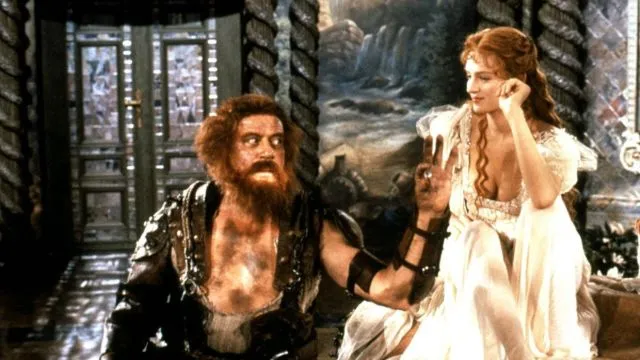Uma Thurman has one of the most distinctive and fascinating careers in Hollywood. With a filmography that includes some of the most iconic roles of the 1990s and 2000s, she’s best known for her striking presence, daring performances, and artistic collaborations—particularly with director Quentin Tarantino. Though her appearances on screen have slowed in recent years, her influence and legacy remain undiminished.
From period pieces to science fiction thrillers, from comic book adaptations to bloody revenge sagas, Thurman has inhabited a wide spectrum of genres with elegance, fierceness, and unforgettable screen presence. While it might be surprising that she’s only received a single Academy Award nomination in her decades-long career, her work speaks for itself. Below is a closer look at five of Uma Thurman’s greatest film roles, and why they continue to stand out.
Pulp Fiction (1994)
The Birth of Mia Wallace: An Icon of 90s Cinema
In Quentin Tarantino’s Pulp Fiction, Uma Thurman created one of the most recognizable characters of modern cinema: Mia Wallace. With her jet-black bob, red lipstick, and detached coolness, Mia remains a pop culture icon. Beyond the surface-level aesthetics, Thurman brought something truly compelling to the role—she made Mia complex, magnetic, and dangerously unpredictable.
The Heart of the Narrative
Mia is the wife of gangster Marsellus Wallace, and Thurman plays her as someone who’s simultaneously mysterious, charming, and perhaps a little bit sad. Her time on screen, particularly in the unforgettable sequence at Jack Rabbit Slim’s, showcases the depth she brings to even a supporting role. That dance with Vincent Vega (played by John Travolta) has been mimicked and parodied endlessly, but no imitation ever captures the real electricity of that scene.
Awards and Recognition
Thurman received her only Oscar nomination to date for this performance, in the Best Supporting Actress category. It’s a testament to how indelible her work in Pulp Fiction is—especially given that she appears in less than a third of the movie.
Kill Bill: Volume 1 (2003) and Kill Bill: Volume 2 (2004)
The Bride Rises: Thurman’s Career-Defining Performance
Though technically two films, Kill Bill: Vol. 1 and Vol. 2 were conceived as one cinematic opus. In it, Thurman plays Beatrix Kiddo, better known as “The Bride,” a former assassin left for dead by her former boss and lover, Bill. Waking from a four-year coma, she embarks on a brutal, bloody journey of revenge. This role wasn’t just a departure from her earlier work—it was a full-on transformation into an action icon.
A Role Written Just for Her
Tarantino wrote the character of Beatrix Kiddo specifically for Thurman. In interviews, he’s described their collaborative process as one of the most rewarding of his career. The role allowed Thurman to display a full emotional arc—love, rage, grief, resilience—and she trained extensively in martial arts, sword-fighting, and stunt work. She sells every moment of Beatrix’s vengeance with a sincerity that makes the over-the-top violence feel deeply personal.
Themes of Feminine Power and Survival
Beatrix isn’t just a female action hero—she’s a woman driven by loss, love, and a deep maternal instinct. Few revenge tales take such care in portraying the emotional toll of violence, but Thurman does just that. Especially in Volume 2, which slows down and gives more room to explore her motivations and heartbreak, we see an entirely different layer of the character.
Gattaca (1997)
A Visionary Sci-Fi Film with Emotional Depth
In Gattaca, directed by Andrew Niccol, Uma Thurman stars opposite Ethan Hawke in a dystopian tale set in a future where genetic perfection is the norm and natural-born humans are considered second-class citizens. Thurman plays Irene Cassini, a genetically “valid” worker at the Gattaca Aerospace Corporation, who becomes romantically involved with Hawke’s character, Vincent—a man hiding his true identity to pursue his dream of space travel.
Quiet Strength and Emotional Complexity
Thurman’s performance in Gattaca is notably understated, but powerful. Her character is poised and reserved, but her vulnerability peeks through, especially when she begins to suspect that Vincent is not who he claims to be. Rather than being reduced to a mere love interest, Irene is integral to the emotional tension of the story. Her arc reflects themes of identity, trust, and the consequences of a society obsessed with perfection.
Critical Reception and Cultural Legacy
Though it wasn’t a box office smash upon release, Gattaca has grown into a cult favorite and is often referenced in discussions of bioethics, surveillance, and the future of genetic engineering. Its relevance has only increased, and Thurman’s performance is one of its enduring strengths. The film also marked another real-life chapter: Thurman and Hawke married shortly after making the film.
Dangerous Liaisons (1988)
A Period Piece with Teeth
Thurman’s breakthrough role came in Stephen Frears’ Dangerous Liaisons, a wickedly intelligent adaptation of the 18th-century French novel Les Liaisons dangereuses. The film features a star-studded cast including Glenn Close, John Malkovich, and Michelle Pfeiffer. At just 18 years old, Thurman plays Cécile de Volanges, a naive young woman caught in a twisted game of seduction and betrayal orchestrated by manipulative aristocrats.
A Daring Early Performance
In a cast of acting giants, Thurman holds her own. Her Cécile begins the story innocent and giggly, but by the end, she’s damaged and hardened by the emotional warfare she’s been pulled into. It’s a challenging role, demanding both emotional vulnerability and a physicality that few teenage actors could have pulled off with such conviction.
Critical and Industry Recognition
Dangerous Liaisons was a major awards contender, winning three Academy Awards, including Best Adapted Screenplay. Though Thurman wasn’t nominated individually, her role in the ensemble helped propel her to national attention. It also positioned her as a serious actress unafraid of provocative material.
The Adventures of Baron Munchausen (1988)
Entering the World of Fantasy
The same year as Dangerous Liaisons, Thurman also starred in Terry Gilliam’s The Adventures of Baron Munchausen, a whimsical and chaotic fantasy that showcases her ability to thrive in visually extravagant and offbeat films. In this sprawling, imaginative story, Thurman plays Venus, the goddess of love, and Rose, a member of the Baron’s dream-like world.
A Dreamy, Surreal Performance
As Venus, Thurman is introduced in one of the most memorable visual sequences of the 1980s—emerging from a giant seashell in a clear homage to Botticelli’s The Birth of Venus. It’s a role that could easily feel decorative or shallow, but she imbues Venus with curiosity and quiet mischief. Even in the limited screen time, she manages to balance the theatricality with charm.
A Cult Classic, Eventually
The film was a financial failure upon release and plagued by production difficulties, but like many Gilliam films, Baron Munchausen gained cult status over time. It’s now seen as a visually inventive classic, and Thurman’s small but radiant role has become a favorite for cinephiles looking to trace her early work.
Honorable Mentions
Henry & June (1990)
Thurman starred as June Miller in this biopic about the controversial love triangle between Anaïs Nin, Henry Miller, and his wife. The film was the first to receive the NC-17 rating in the U.S. for its explicit content, but Thurman’s performance stood out for its boldness and emotional depth.
Batman & Robin (1997)
Though widely panned, Thurman’s turn as Poison Ivy in Batman & Robin remains one of the camp highlights of 90s superhero cinema. She leaned into the character’s theatrical villainy with flair and made a lasting impression in an otherwise critically reviled film.
A Career of Defining Moments
Uma Thurman’s best films show not only her versatility as an actress, but her commitment to challenging, often unconventional roles. She has thrived in both studio blockbusters and auteur-driven projects, building a filmography that’s as varied as it is memorable.
Despite the lack of widespread awards recognition, Thurman’s performances have endured because of their emotional honesty, technical precision, and timeless appeal. Whether she’s wielding a katana, dancing in a diner, or floating out of a giant seashell, Uma Thurman is impossible to ignore.
Looking Ahead: What’s Next for Uma Thurman?
In recent years, Thurman has appeared in television projects like Imposters, Chambers, and Suspicion, showcasing her talents in new formats. She continues to work selectively in film and remains a revered figure in Hollywood, with many fans hoping for another collaboration with Tarantino in the future.
No matter what roles she takes next, her legacy is firmly intact—and these five films stand as a testament to her brilliance.
- Man City drop Jack Grealish transfer hint as they launch stunning new kit for Club World Cup - June 5, 2025
- Madison Beer Shares Cheeky Bath Photo in Oscars Party Post - June 5, 2025
- Willow Name Meaning - June 5, 2025


